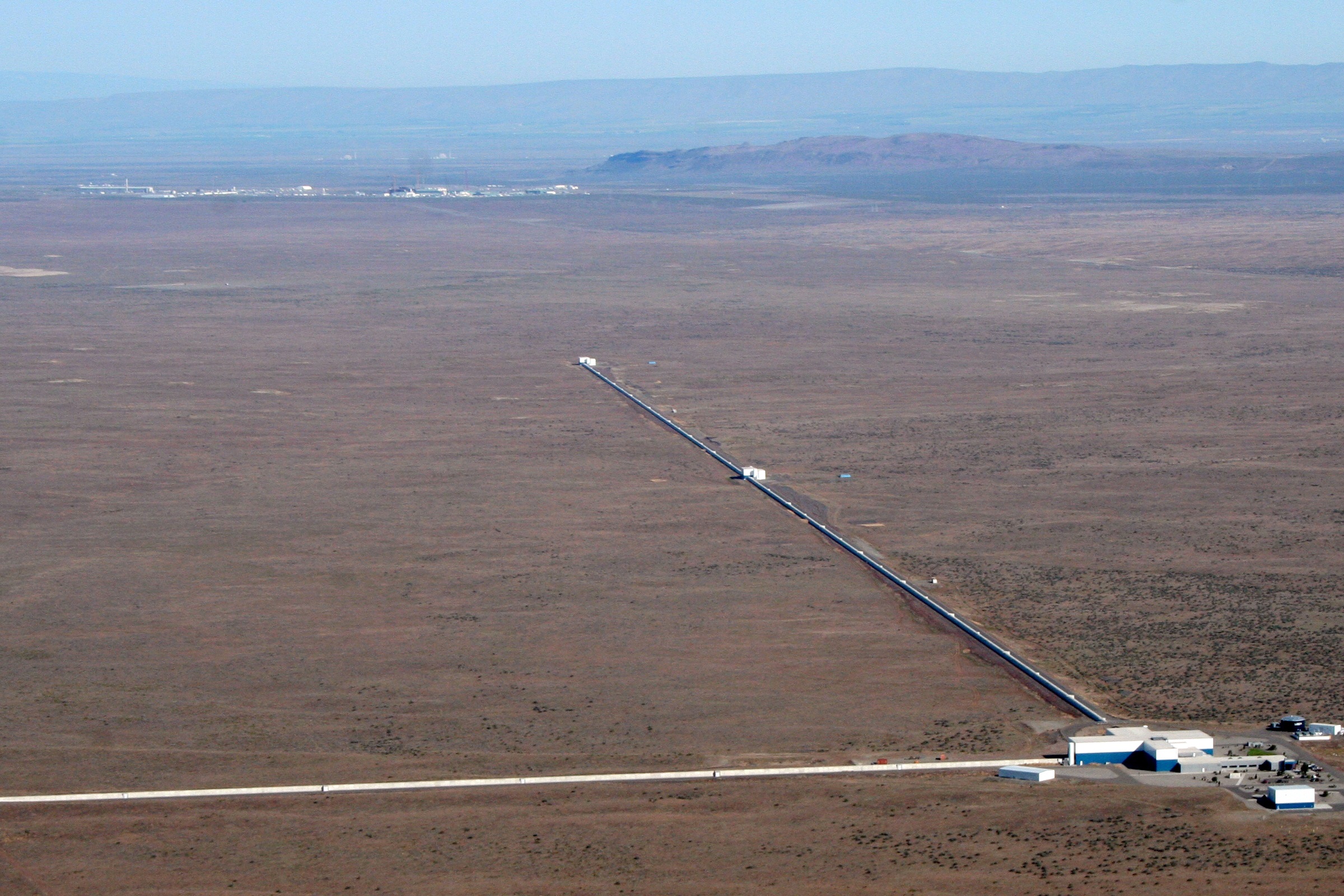|
Gravitational Wave Detector
A gravitational-wave detector (used in a gravitational-wave observatory) is any device designed to measure tiny distortions of spacetime called gravitational waves. Since the 1960s, various kinds of gravitational-wave detectors have been built and constantly improved. The present-day generation of laser interferometers has reached the necessary sensitivity to detect gravitational waves from astronomical sources, thus forming the primary tool of gravitational-wave astronomy. The first direct detection of gravitational waves made in 2015 by the Advanced LIGO observatories, a feat which was awarded the 2017 Nobel Prize in Physics. Challenge The direct detection of gravitational waves is complicated by the extraordinarily small effect the waves produce on a detector. The amplitude of a spherical wave falls off as the inverse of the distance from the source. Thus, even waves from extreme systems such as merging binary black holes die out to a very small amplitude by the time ... [...More Info...] [...Related Items...] OR: [Wikipedia] [Google] [Baidu] |
LIGO Schematic (multilang)
The Laser Interferometer Gravitational-Wave Observatory (LIGO) is a large-scale physics experiment and observatory designed to detect cosmic gravitational waves and to develop gravitational-wave observations as an astronomical tool. Two large observatories were built in the United States with the aim of detecting gravitational waves by laser interferometry. These observatories use mirrors spaced four kilometers apart which are capable of detecting a change of less than one ten-thousandth the charge diameter of a proton. (that is, to Proxima Centauri at ). The initial LIGO observatories were funded by the United States National Science Foundation (NSF) and were conceived, built and are operated by Caltech and MIT. They collected data from 2002 to 2010 but no gravitational waves were detected. The Advanced LIGO Project to enhance the original LIGO detectors began in 2008 and continues to be supported by the NSF, with important contributions from the United Kingdom's Science and ... [...More Info...] [...Related Items...] OR: [Wikipedia] [Google] [Baidu] |
